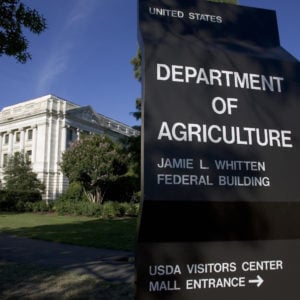The gene-edited crops most striking feature is that the oil made from it forms less trans fatty acids in frying conditions.
Calyno oil, as it’s called, represents the first time a cultivated plant has been breed and commercialized by gene editing. Other gene-edited agricultural products, including tilapia, herbicide-resistant rice and seedless tomatoes are in the pipeline.
Allow me to explain briefly what this gene regulation is all about. Mutation, selection, hybridization and similar classical breeding techniques have been used for breeding new genotypes that are adaptable to varying environmental conditions. Recently tissue culture, gene transfer and other molecular biologic developments have been also used.
But in the last decades, artificial mutations have allowed plant breeders to develop thousands of varieties by using X, gamma and similar radioactive rays. Mutation is a spontaneous or intentional change in a living organism. Since 2010, this process has been carried out in laboratories on a molecular basis, with genomic arrangements. In this method, genotypes can be registered and licensed to producers in a short time. Gene regulation includes a number of new gene-engineering methods such as CRISPR. In these methods, there is no transfer of any gene from an outside species like there is with GMOs. On the contrary, new genotypes are created by changing the target gene with the help of transient DNA-cutting enzymes. This application can increase or decrease the effect of a gene. We can also call this process ‘artificial micro-mutation.’

GMO crops are subjected to many health and environmental safety tests before they are introduced to consumers. Therefore, the cost of a genotype to the company may exceed $100 million, which is the main reason GMO and global multinational corporations have become synonymous. On the other hand, the cost of developing genotypes with gene editing is almost 1/10th of the cost of developing GMOs; therefore, they can be utilized by low-budget startups, universities and even public institutions.
A biology startup called Calyxt located in Minnesota produced a gene-edited soybean in 2013. This cultivar has been registered within five years and planted in 2018 on an area of 6,700 hectares. The company focuses on the quality of plants such as wheat, potatoes, rapeseed and alfalfa, not on yield increases or resistance to disease-pests, aiming to offer consumers healthy eating options. The company has a dozen more gene-edited crops in the pipeline, including high-fiber wheat, potatoes that stay fresh longer, better-tasting tomatoes, low-gluten wheat, apples that don’t turn brown and potatoes better suited for cold storage.
The number of crop gene-editing projects underway around the world is astonishing. China leads the pack with 541 projects in gene editing research, followed by the USA with 387 and Japan with 81 projects. These will be pioneers for further crop improvement, especially for new cultivars bred to improve food security under the threat of global warming.
Generally, plant breeders aim to improve the high yield and quality of popular crops like potato, corn, soybean and wheat, hoping to maximize profit. It looks like plant breeding rights or royalty is working perfectly in the world. Just a question: How long will EU and developing countries pay the mentioned royalties? It is understandable; developing countries have not established their infrastructure yet. What about EU? EU is accepting gene edited product as GMO and prohibits producing and consuming them within the EU.
Nazimi Acıkgoz is an emeritus plant breeding professor from Ege University, Izmir, Turkey and a science writer focusing on climate change and food security, plant breeding and agrobiotechnology. Follow him on Twitter @nazimiacikgoz
This article originally ran at BlogActiv as First Plant Product of Gen Editing: New Soybean Varieties and has been republished here with permission.































